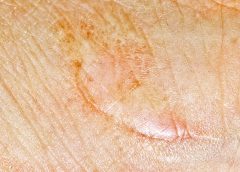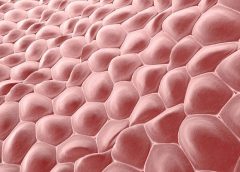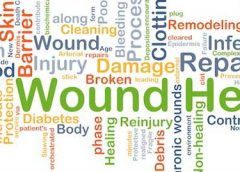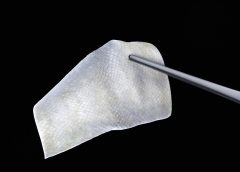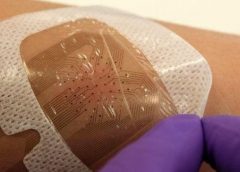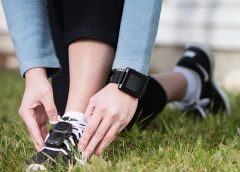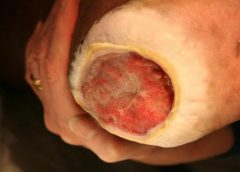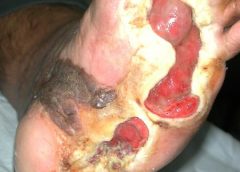Scars are a particularly sore subject for most people. Not only are they aesthetically unpleasing, but some of them can prove painful. That’s why research into minimizing the appearance of scars continues to be a central priority of wound care-related research. In the last several months alone, there have been quite a few exciting such breakthroughs. (more…)
Read MoreSearch Results for: trac
A new way of healing wounds in the future discovered by scientists
Scientists at Ohio State University have developed a new method that has the capability of changing the body’s existing cells into new cells to promote healing. The method, called Tissue Nanotransfection (TNT), reprograms cells through a device that uses nanotechnology. The way it would work: First, doctors would apply a light electrical stimulation to the surface of the skin. They would then place a small chip about the size of a cuff link onto the site of the wound. In less than a second, this chip would deliver reprogramming factors (pre-programmed DNA or RNA) non-invasively into living skin cells via a high-intensity, focused electric field, converting them into whatever type of cells a scientist or doctor may choose. (more…)
Read MoreNew Approach to Wound Healing Easy on Skin, Tough on Bacteria
Washington, D.C. — In a presentation to the American Chemical Society meeting, Ankit Agarwal, a postdoctoral researcher at the University of Wisconsin-Madison, described an experimental approach to wound healing that could take advantage of silver’s anti-bacterial properties, while sidestepping the damage silver can cause to cells needed for healing.
Silver is widely used to prevent bacterial contamination in wound dressings, says Agarwal, “but these dressings deliver a very large load of silver, and that can kill a lot of cells in the wound.” (more…)
Read More2018 American Nurse Today Education Guide
Moving ahead with your nursing education
Deciding to continue your education is exciting as well as daunting. You’ll need support from your friends and family, as well as your colleagues and fellow students. But you also can get support from the nursing profession. In this article, you’ll find information about a variety of resources to aid you along this next step in your career.
[read more ->]
Ready, set, go… to school!
With 79.6% of employers now requiring or having a strong preference for nurses with a baccalaureate degree and a growing demand for nurses, there’s no better time to return to school.
[read more ->]
Frontiers of nursing education

Is an accelerated nursing program right for you?
Are you up for the challenge of an accelerated nursing program? You can earn your degree quickly and be off the races in your career, but these programs require dedication, self-discipline, and an ability to immerse yourself in the learning experience.
[read more ->]
Returning to nursing school? Keys to success
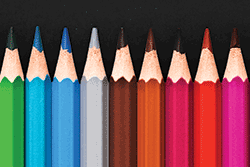
Ready to change specialties?
The opportunities within nursing are practically limitless. You can choose patient care, education, pharmaceutical sales, research…the list goes on and on. That’s part of the challenge. With so many choices, you need to know yourself and what you want as well as understand what will be required to get you to this next stage in your career.
[read more ->]
Lifelong Learning: Is a postmaster’s certificate the right option for you
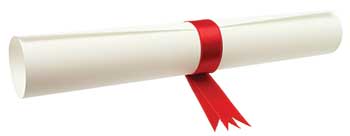
Interprofessional education
Imagine the depth of knowledge you would gain by learning along side students in other healthcare disciplines. In education settings that embrace interprofessional education, students learn with, from, and about each other to enable effective communication and improve patient outcomes.
[read more ->]
Can nursing meet the 80/2020 goal?
In 2010, a goal was set to have 80% of nurses with BSNs by 2020. Read this article to find out what kind of progress we’ve made so far.
[read more ->]
Your doctorate and the path to persistence
High attrition rates for doctoral nursing students (reported to be as much as 50%) in the face of an increasing demand for PhD-prepared nursing faculty is a growing concern. So, what’s at the crux of this problem and how do we solve it? When I was a doctoral student, I researched how other doctoral students balanced work, family, and school. The goal was to learn more about the strategies used by these students.
[read more ->]2017-2018 Education Guide Read More
A Conversation With the PJ Medical Director
Fish Skin for Human Wounds: Iceland’s Pioneering Treatment
The FDA-approved skin substitute reduces inflammation and transforms chronic wounds into acute injuries.
Six hours north of Reykjavik, along a narrow road tracing windswept fjords, is the Icelandic town of Isafjordur, home of 3,000 people and the midnight sun. On a blustery May afternoon, snow still fills the couloirs that loom over the docks, where the Pall Palsson, a 583-ton trawler, has just returned from a three-day trip. Below the rust-spotted deck, neat boxes are packed with freshly caught fish and ice. “If you take all the skins from that trawler,” says Fertram Sigurjonsson, the chairman and chief executive officer of Kerecis Ltd., gesturing over the catch, “we would be able to treat one in five wounds in the world.” (more…)
Read MoreSmart bandages which tell doctor how wound is healing to begin trials
Smart bandages which can detect how well a wound is healing and send a progress report to the doctor will be trialled within the next year, scientists have said. The dressings are fitted with tiny sensors which can pick up blood clotting, or spot infections, and wirelessly send data back to a clinician. Swansea University, which is hoping to trial the bandages within 12 months, said the new technology could offer a personalised approach to medicine.
Currently patients with wounds are advised to return to the doctor in a certain amount of time. But each case may need a longer time to heal, or may have become infected before the visit. (more…)
Read MoreWebinars
Measuring wounds
BY: NANCY MORGAN, RN, BSN, MBA, WOCN, WCC, CWCMS, DWC
An essential part of weekly wound assessment is measuring the wound. It’s vitally important to use a consistent technique every time you measure. The most common type of measurement is linear measurement, also known as the “clock” method. In this technique, you measure the longest length, greatest width, and greatest depth of the wound, using the body as the face of an imaginary clock. Document the longest length using the face of the clock over the wound bed, and then measure the greatest width. On the feet, the heels are always at 12 o’clock and the toes are always 6 o’clock. Document all measurements in centimeters, as L x W x D. Remember—sometimes length is smaller than width. (more…)
Doctor-turned-businesswoman uses technology to help diabetics save their feet
When Dr. Breanne Everett began training to become a plastic surgeon she was shocked by the number of foot problems, including amputations, she was seeing among diabetic patients. She decided to look for a solution.
That led the 32-year-old physician to put her medical training on hold and make the transition into business and technology.
She invented a device to alert diabetic patients before a sore spot on their foot turned into a wound that could cause severe complications.
The Calgary company she founded — Orpyx — developed pressure-sensitive insole technology to feed information to patients and prevent the kinds of wounds that can lead to amputations in diabetics with peripheral neuropathy, which can cause numbness in the feet.
The company’s smart-sole foot protection system is attracting attention around the world with ongoing clinical trials in both the U.S. and U.K. The product is available through the company, which calls it the only device of its type on the market.
Read more at Ottawa Citizen
Read MoreAccuracy of the Ankle-brachial Index in the Assessment of Arterial Perfusion of Heel Pressure Injuries
Abstract: Background. The evaluation and treatment of heel pressure injuries are a significant and expensive sequela of the aging population. Although the workup of patients with lower extremity tissue loss usually involves an assessment of the arterial blood flow by means of noninvasive vascular testing, the results may be misleading in patients with heel pressure injuries when the ankle-brachial index (ABI) does not provide direct information about perfusion of the rearfoot. The objective of this retrospective, observational investigation was to determine if noninvasive vascular testing provides accurate and reliable results in patients with heel pressure injuries. (more…)
Read MoreReduction of 50% in Diabetic Foot Ulcers With Stem Cells
MUNICH — Local injection of mesenchymal stem cells derived from autologous bone marrow shows promise in healing recalcitrant neuropathic diabetic foot ulcers, a novel study from Egypt shows.
Presenting the results at the European Association for the Study of Diabetes (EASD) 2016 Annual Meeting, Ahmed Albehairy, MD, from Mansoura University, Egypt, said: “In patients who received the mesenchymal stem cells, ulcer reduction was found to be significantly higher compared with patients on conventional treatment after both 6 weeks and 12 weeks of follow-up. This is despite the fact that initial ulcer size was larger in the stem-cell–treated group.” (more…)
Read More
